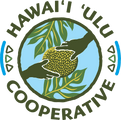Pandemic Disruptions Highlighted Importance of Local Food System in Hawai’i
July 25, 2021 (Food Print) When COVID-19 hit the United States, areas all over the country saw their supply chains go haywire. School cafeterias, restaurants, airlines and conference centers lost their customers. Farmers, ranchers and fishers were forced to figure out how to reach people where they now were: at home. In the Hawaiian islands, where tourism makes up nearly a quarter of the economy, the disappearance of visitors meant that local growers, who had fought so hard for their piece of the food economy, had to scramble to connect with locals when their resort and hotel customers disappeared.
Facing empty grocery shelves, consumers also scrambled to connect with local producers. Despite Hawai’i being very well suited to grow a wide variety of foods, roughly 90 percent of the state’s food is imported. Agriculture on the islands focuses on export business, commodity crops like corn seed and forestry. Local farmers, who have struggled to compete and had little governmental support in the past, suddenly found themselves a vital part of the food system. The COVID-19 pandemic brought the island’s supply chain challenges to the forefront, and showcased how some farmers and local food advocates have been working to make the local food system in Hawai’i more resilient.
Read the full article on: Food Print


Leave a comment
Please note, comments must be approved before they are published